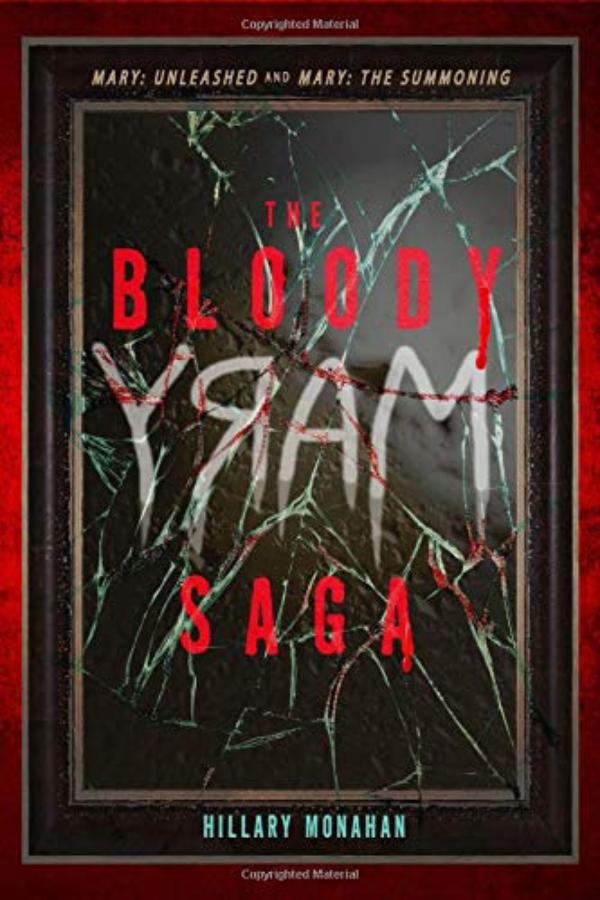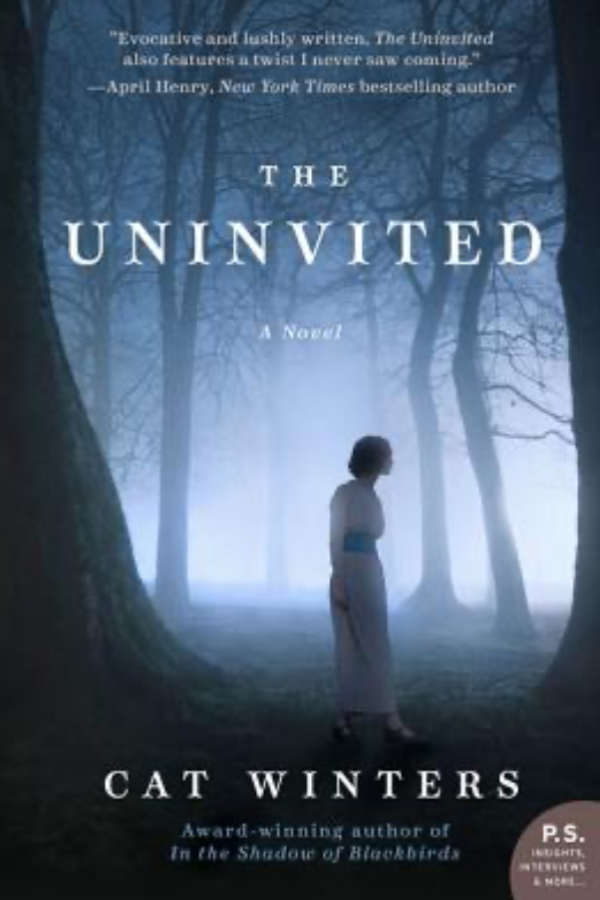<< BACK TO STORYTELLING
Having grown up in the desert southwest, I only enjoyed the novelty of a regularly flowing river once I moved to the Pacific Northwest in 2010. Before that, rivers were vast expanses of sand, often choked with weeds but dry as a bone. When they did run, as was the case during the monsoon season, it was frequently with violent and destructive flooding.
The flash floods of the Sonoran desert are like avalanches in more northern latitudes — you only know you're in one once it's right upon you. There's little warning because the floods almost always start somewhere else — often miles upstream, where the weather can be very different from wherever you're standing. As a result, children living in the desert southwest are warned to stay away from the washes, particularly during monsoon season.
To help drive this warning home, parents sometimes employed a ghost story. Enter the specter know as "Bloody Mary."
I first heard this story in the mid-1970s from the neighbor kids, and it went like this: Bloody Mary was wandering a dry river bed with her child when a flash flood crashed down upon them, separating mother and child in both body and spirit. The mother, so distraught over the loss, would stalk the arroyos in an unending search for her missing baby. You would often hear her howling before you saw the all-white apparition. And if she happened to come upon another child, she would drag them into the afterlife in a desperate attempt to soothe her loneliness.
Interestingly, the neighbor kids told me that “Bloody Mary” only walked the washes when they were dry. This was for two reasons. The first was the fanciful insistence that a ghost couldn’t walk in the water without being washed away — even though they were incorporeal. However, the second reason was more practical, as dry washes could quickly flood under the right weather conditions. Even the details of Blood Mary’s ghostly howls had a practical element, as flash floods are often preceded by a loud noise similar to howling wind or an oncoming train.
If you weren’t inclined to wander a riverbed but still wanted to see “Bloody Mary,” the neighbor kids told me about a workaround. You could stand in a dark room in front of a mirror with your eyes closed, and saying her name three times would make “Bloody Mary’s” image appear next to your reflection. This was a less dangerous but more terrifying version of the tale. After all, what kid wanted to believe “Bloody Mary” could be summoned out of a household mirror with just a few words? Even worse, the neighborhood kids insisted if you did see “Bloody Mary” you’d surely die from fear.
So where, oh where, did this extraordinary story come from?
Having grown up in the desert southwest, I only enjoyed the novelty of a regularly flowing river once I moved to the Pacific Northwest in 2010. Before that, rivers were vast expanses of sand, often choked with weeds but dry as a bone. When they did run, as was the case during the monsoon season, it was frequently with violent and destructive flooding.
The flash floods of the Sonoran desert are like avalanches in more northern latitudes — you only know you're in one once it's right upon you. There's little warning because the floods almost always start somewhere else — often miles upstream, where the weather can be very different from wherever you're standing. As a result, children living in the desert southwest are warned to stay away from the washes, particularly during monsoon season.
To help drive this warning home, parents sometimes employed a ghost story. Enter the specter know as "Bloody Mary."
I first heard this story in the mid-1970s from the neighbor kids, and it went like this: Bloody Mary was wandering a dry river bed with her child when a flash flood crashed down upon them, separating mother and child in both body and spirit. The mother, so distraught over the loss, would stalk the arroyos in an unending search for her missing baby. You would often hear her howling before you saw the all-white apparition. And if she happened to come upon another child, she would drag them into the afterlife in a desperate attempt to soothe her loneliness.
Interestingly, the neighbor kids told me that “Bloody Mary” only walked the washes when they were dry. This was for two reasons. The first was the fanciful insistence that a ghost couldn’t walk in the water without being washed away — even though they were incorporeal. However, the second reason was more practical, as dry washes could quickly flood under the right weather conditions. Even the details of Blood Mary’s ghostly howls had a practical element, as flash floods are often preceded by a loud noise similar to howling wind or an oncoming train.
If you weren’t inclined to wander a riverbed but still wanted to see “Bloody Mary,” the neighbor kids told me about a workaround. You could stand in a dark room in front of a mirror with your eyes closed, and saying her name three times would make “Bloody Mary’s” image appear next to your reflection. This was a less dangerous but more terrifying version of the tale. After all, what kid wanted to believe “Bloody Mary” could be summoned out of a household mirror with just a few words? Even worse, the neighborhood kids insisted if you did see “Bloody Mary” you’d surely die from fear.
So where, oh where, did this extraordinary story come from?
SOUTH AMERICAN FOLKTALE
It wasn't until twenty years later that I learned the etiology of what I had been told by the kids next door. A strange blend of urban legend, folktale, popular media, and common sense brought about the “Bloody Mary” tale. The story’s main progenitor was the La Llorona folktale from South America, which tells of a jealous wife who punished her unfaithful husband by drowning herself and their infant child in a flooding river. The version I heard in the 1970s had the more adult aspects removed, but the premise was the same.
|
WAILING WOMEN
The idea of a wailing female ghost dressed all in white is older and has a different origin point. These stories stretch back to the Middle Ages in Europe, when mothers frequently had to deal with their offspring not surviving childhood—or sometimes even birth. A common feature of the “wailing woman” ghost story is the phantom dressed in white, sometimes carrying a candle or a lantern but always roaming in search of something. |
GHOSTS AND MIRRORS
Superstitions around ghosts and mirrors are also old and widespread. A European legend called “Bloody Mary” is completely separate from the La Llorona tradition but also impacted the tale I’d heard as a child. This legend claims that you can summon a female spirit by standing in front of a mirror and chanting her name. But rather than snatching away hapless children, this “Bloody Mary” is said to divine the future of the beholder. The ghost-in-the-mirror trope is connected to other longstanding superstitions about reflective surfaces, often considered metaphorical — or even literal — gateways into the supernatural realm. Whether it was water, metal, glass, or something else, ancient Greeks and Romans had plenty of spooky taboos around reflections. The idea that ghosts could somehow harm the living through a reflective surface also pops up throughout Asia, and plenty of modern religions, including Judaism and Roman Catholicism, have traditions of covering reflective surfaces following the death of a loved one.
POPULAR CULTURE INFLUENCES
While it’s most likely the neighbor kids heard their version of “Bloody Mary” from relatives or friends on the school playground, contemporary movies and television may have also influenced them. The earliest example I would find was a Mexican film from 1960 called La Llorona, which contains the infidelity and abandonment themes but is missing the drowning aspect. Drownings as an act of murder were also central plot points in films such as The Bad Seed and Damien: Omen 2. How much influence these films had on the “Bloody Mary” story is anyone’s guess.
Whether you believe in ghosts or not, the power of a good ghost story is undeniable.
Decades after first hearing the story, “Bloody Mary” continued to dog me. In the early 1990s, I went to work for the Arizona-Sonora Desert Museum outside of Tucson, where gift shops sold a children’s book called La Llorona: The Weeping Woman. Written by famed author and storyteller Joe Hayes, it was always a popular title at the museum and became (and maybe still is) a perennial feature in area libraries and schools. Ten years later, as I walked with my sons along the parched Santa Cruz River, I told them the tale of “Bloody Mary.” When we got home, they immediately tried to summon up the spirit from the bathroom mirror. They were braver than I had been at their age — and disappointed that the ghost never manifested herself.
Nearly fifty years after I first heard the story, I can’t think about “Bloody Mary” without smiling — and shivering — a little
Whether you believe in ghosts or not, the power of a good ghost story is undeniable.
Decades after first hearing the story, “Bloody Mary” continued to dog me. In the early 1990s, I went to work for the Arizona-Sonora Desert Museum outside of Tucson, where gift shops sold a children’s book called La Llorona: The Weeping Woman. Written by famed author and storyteller Joe Hayes, it was always a popular title at the museum and became (and maybe still is) a perennial feature in area libraries and schools. Ten years later, as I walked with my sons along the parched Santa Cruz River, I told them the tale of “Bloody Mary.” When we got home, they immediately tried to summon up the spirit from the bathroom mirror. They were braver than I had been at their age — and disappointed that the ghost never manifested herself.
Nearly fifty years after I first heard the story, I can’t think about “Bloody Mary” without smiling — and shivering — a little
STORIES FEATURING LA LLORONA AND OTHER FEMALE GHOSTS
















